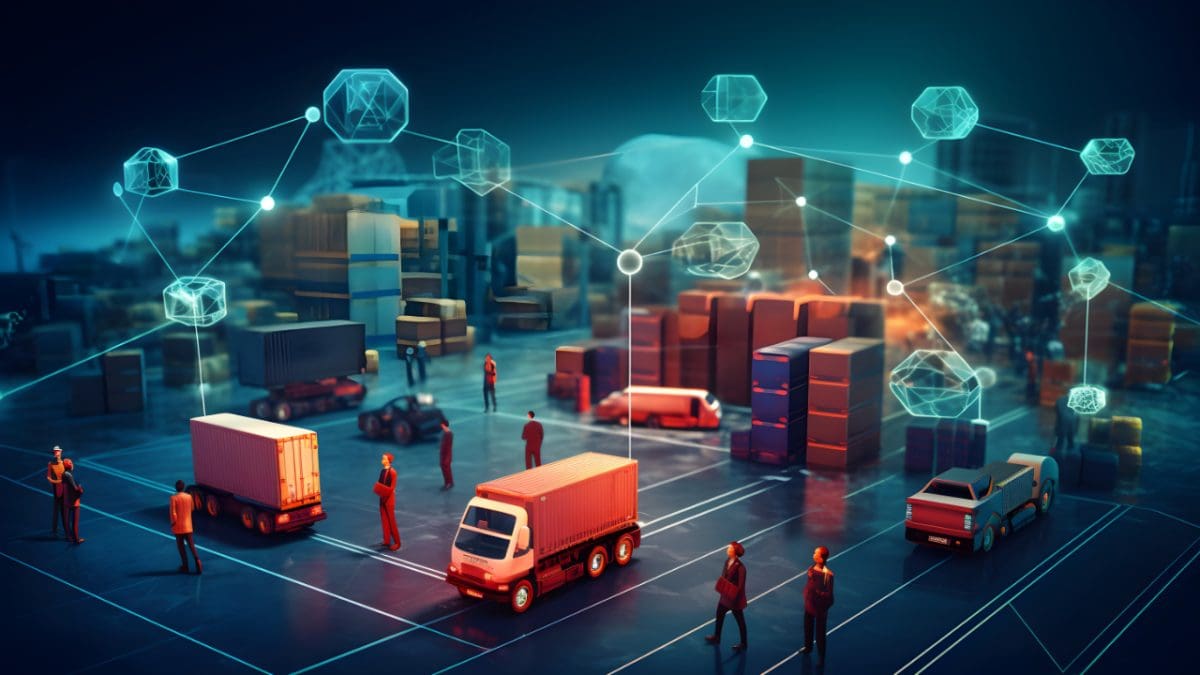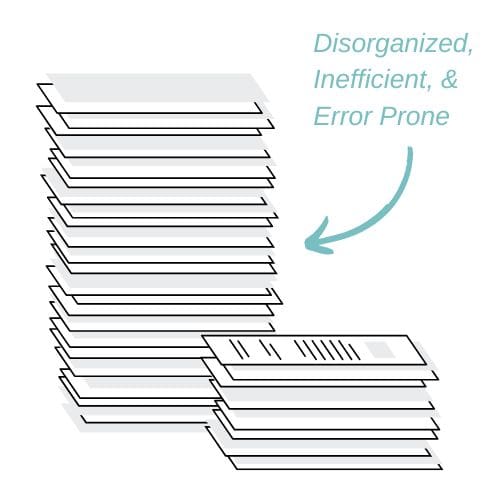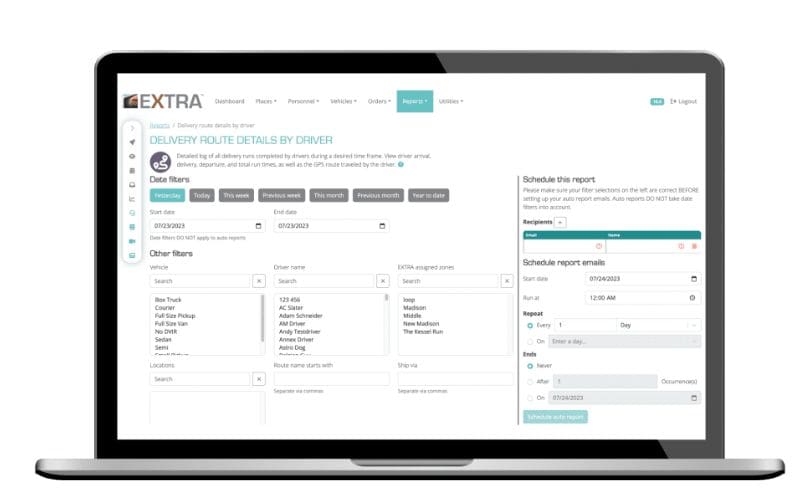
At a time when digital transformation is redefining the way we live and work, it’s astonishing to see logistics—a cornerstone of modern commerce—still heavily reliant on paper-based systems. Industries like healthcare, finance, and retail have not only embraced digital technologies but have also reaped significant benefits in efficiency, cost-effectiveness, and customer satisfaction. Yet, logistics seems to be caught in a time warp, clinging to outdated paper-based processes for tasks ranging from inventory management to delivery routing.
The urgency to modernize delivery and returns systems has never been more palpable. As consumer expectations for speed and transparency continue to rise, the logistics sector faces a critical juncture. It must either adapt and evolve or risk becoming obsolete in a world that’s rapidly marching towards complete digitization. Today, we’re shedding light on the pressing need for digital transformation in logistics and offering a comprehensive guide on making this crucial transition.
The Persistence of Paper in a Digital World
From healthcare to finance, digital transformation has become the norm, streamlining operations and enhancing customer experiences. These industries have successfully integrated technology into their core processes, setting a precedent for what’s possible.
The Lag in Logistics and the Continued Use of Paper

While other sectors have leaped into the future, logistics seems to be stuck in a moment, heavily relying on paper-based systems. It’s more than using paper for record-keeping. It’s about entire workflows that are designed around physical documents. Invoices, delivery receipts, and even route planning are often still done on paper. This slows down the process and opens the door for human error. Imagine a scenario where a delivery driver is given a paper-based route that hasn’t accounted for real-time traffic updates. The result? Unnecessary delays and increased fuel costs ultimately affect the bottom line.
The use of paper also creates a disconnect in real-time information sharing. The ability to make quick decisions based on real-time data is crucial. Paper-based systems require manual updates, which can lead to significant time lags and, in some cases, misinformation. This is particularly problematic in scenarios that require quick turnarounds and high levels of accuracy like inventory management and order fulfillment.
Real-World Examples of the Challenges of Paper-Based Processes
Let’s consider a small-scale logistics company that still relies on paper for its operations. When a customer calls to inquire about the status of their delivery, the customer service representative has to physically locate the paper trail, which could be buried in a pile of other documents. This frustrates the customer and wastes valuable employee time that could be better spent on more productive tasks.
Another example would be the inefficiency in returns management. With a paper-based system, processing returns can become a logistical nightmare. Each returned item needs to be manually logged, checked against the original invoice, and then updated in the inventory. This cumbersome process increases the likelihood of errors, leading to inventory discrepancies and customer dissatisfaction.
The persistence of paper in logistics is more than just an outdated practice; it’s a hindrance to efficiency, accuracy, and customer satisfaction.
The Inefficiencies of Paper Logistics
While paper logistics have been used for a long time, they cause many problems that can affect the whole supply chain.
Data Accuracy: The Perils of Manual Entry
One of the most significant drawbacks of paper-based logistics is the issue of data accuracy. When information is manually entered into paper forms, the risk of human error is exponentially higher. Whether it’s a mistyped delivery address or an incorrect inventory count, these errors can lead to a cascade of problems. For instance, an incorrect address can result in failed deliveries, which not only wastes time and resources but also erodes customer trust. An inaccurate inventory count can lead to overstocking or understocking, both of which have financial implications. Overstocking increases holding costs, while understocking can result in lost sales and a tarnished brand reputation.
Data Retrieval and Storage: The Maze of Paper Records
Another major inefficiency is the difficulty in retrieving and storing paper records. In a digital system, you can quickly search for the information you need with a few keystrokes. In contrast, paper records require physical storage space and a manual filing system. This not only takes up valuable real estate but also makes data retrieval a time-consuming and cumbersome process. Imagine needing to find a specific invoice from two years ago. With a paper-based system, you’d likely have to sift through stacks of paper, wasting time that could be better spent on strategic tasks.
Paper records are also susceptible to damage and loss. A simple water leak or fire can result in the permanent loss of critical business data. Even without such disasters, the wear and tear of paper over time can make older records unreadable, posing a significant risk for businesses that need to maintain long-term archives for compliance or auditing purposes.
The inefficiencies of paper logistics are significant hurdles that can affect a company’s profitability and long-term sustainability. The issues surrounding data accuracy and data retrieval are more than enough reason for logistics managers to consider transitioning to digital systems. The time, resources, and stress saved by making the switch can be substantial, making it an investment worth considering.
Transitioning to Digital Delivery and Returns Processes
Transitioning from a paper-based to a digital logistics system is a transformation that requires careful planning, employee buy-in, and a strategic approach. Here’s how to navigate this change effectively:
Steps for Transition: The Roadmap to Digital Transformation

The first step in transitioning to a digital system is conducting a comprehensive digital audit. This involves assessing your current paper-based processes to identify inefficiencies, bottlenecks, and areas that would benefit most from digitization. Once you have a clear picture, you can prioritize which processes to digitize first.
After the audit, the next step is phased implementation. Instead of overhauling the entire system at once, which can be overwhelming, introduce changes gradually. Start with less critical processes to test the waters and make necessary adjustments. This approach allows you to iron out any kinks and ensures a smoother transition for all involved.
Employee Training: The Human Element of Digital Transformation
No digital transformation can succeed without the people who will use the new systems daily. That’s why employee training is crucial. Onboarding programs tailored to the new digital systems can help employees adapt more quickly and confidently. These programs should include hands-on training sessions, easy-to-access digital manuals, and a support system to address any questions or concerns. The goal is to make employees comfortable and proficient with the new technology, turning them into advocates rather than resistors of change.
Overcoming Resistance: The Psychological Aspect of Change
Resistance to change is a common human reaction, especially when it comes to technology that could potentially disrupt established routines. This is where change management strategies come into play. Effective communication is key. Keep your team informed about why the change is happening, how it will benefit them, and the timeline for implementation. Address concerns openly and provide avenues for feedback. Sometimes, resistance stems from a lack of understanding, so clear, transparent communication can go a long way in alleviating fears.
Recommended Software Solutions
In the quest to digitize your logistics operations, choosing the right software is a pivotal decision. The market is flooded with various options, but the key is to find a solution that aligns with your specific needs and operational challenges. One such option worth considering is Elite EXTRA, a platform designed to streamline logistics and delivery processes.
Introduction to Software: The Digital Catalysts
Software solutions serve as the backbone of your digital transformation journey. They replace paper-based systems with digital interfaces, automating tasks and providing real-time data for better decision-making. While there are many software options available, it’s crucial to choose one that offers a comprehensive suite of features tailored to logistics. Elite EXTRA, for instance, is designed to handle everything from route optimization to real-time tracking, making it a one-stop solution for logistics managers.
Features and Capabilities: The Must-Haves
When evaluating software options, there are several key features to look for:
- Real-Time Tracking: This feature allows you to monitor deliveries in real time, providing transparency and improving customer satisfaction.
- Analytics: Data is the new oil, and analytics are the refinery. A good software solution should offer robust analytics capabilities to help you make data-driven decisions. This can range from delivery performance metrics to inventory turnover rates.
- Automated Routing: Manually planning routes is time-consuming and prone to errors. Automated routing algorithms can optimize routes for multiple drivers in real time, saving both time and fuel costs.
- User-Friendly Interface: A complex, hard-to-navigate interface can be a significant barrier to adoption. Look for software that is intuitive and user-friendly.
- Scalability: As your business grows, your software should be able to grow with you. Make sure the solution you choose can easily adapt to increasing volumes and complexities.
- Compliance and Security: With increasing regulations around data protection, it’s crucial to choose software that complies with legal requirements and offers robust security features.
Transitioning to a digital logistics system is about leveraging technology to make your operations more efficient, accurate, and agile. With features like real-time tracking, analytics, and automated routing, software solutions like Elite EXTRA can be invaluable assets in your digital transformation journey.

The Benefits of Going Digital
Embracing digital logistics comes with so many benefits that extend beyond mere convenience. From boosting efficiency to reducing your carbon footprint, the advantages are both compelling and multifaceted. Let’s explore these benefits in detail:
Efficiency and Accuracy: The Operational Game-Changers
One of the most immediate benefits of going digital is the drastic improvement in efficiency and accuracy. Digital systems automate many of the tasks that are prone to human error in a paper-based system. For instance, automated routing ensures that drivers take the most efficient path, reducing delivery times and minimizing the chance of delays. Similarly, digital inventory systems can automatically update stock levels in real time, reducing the likelihood of overstocking or understocking issues. This level of accuracy is invaluable in maintaining customer trust and ensuring smooth operations.
Cost and Environmental Benefits: The Double-Win
Switching to digital logistics is good for business and the planet. By eliminating the need for paper, you’re reducing your company’s carbon footprint and contributing to sustainability. Digital systems also often result in cost savings. Think about the expenses associated with paper— from the cost of the ink and paper itself to storage and disposal. These costs add up over time and can be significantly reduced by going digital. The efficiency gains from digital systems often translate into lower operational costs, making it a win-win situation.
Reporting and Compliance: The Oversight Advantage
Digital systems offer robust reporting and analytics features that can be a game-changer for logistics managers. With real-time data at your fingertips, you can make informed decisions quickly, improving your responsiveness to market changes. Digital records are also easier to audit, aiding in compliance with various regulations and standards. This is particularly crucial in industries where compliance is stringent and non-adherence can result in hefty fines.
The Digital Frontier: Charting the Course for Future-Ready Logistics
The journey from paper-based to digital logistics is a transformative leap that positions your business for future success. By embracing digital systems, you’re not just streamlining operations but also gaining a competitive edge in an increasingly digital world. The benefits are multi-dimensional, from operational efficiency and cost savings to environmental sustainability and compliance ease. Companies that have made this transition serve as beacons, illuminating the tangible advantages that come with going digital.
As logistics managers, the imperative is clear: seize the digital opportunity to elevate your logistics operations to new heights. Whether you’re just starting this journey or are well on your way, solutions like Elite EXTRA can serve as valuable tools in your digital transformation. Remember, the future belongs to those who prepare for it today. So, why wait? Take the first step and chart your course towards a more efficient, sustainable, and future-ready logistics operation.
Sources
https://www.forbes.com/sites /forbestechcouncil/2020/04/02/going-paperless-a-journey-worth-taking/
https://www.supplychainbrain.com /articles/37936-watch-why-are-modern-day-supply-chains-so-inefficient
https://www.mckinsey.com/industries/travel-logistics-and-infrastructure/our-insights/the-multi-billion-dollar-paper-jam-unlocking-trade-by-digitalizing-documentation
https://www.mckinsey.com/capabilities /people-and-organizational-performance/our-insights/unlocking-success-in-digital-transformations







